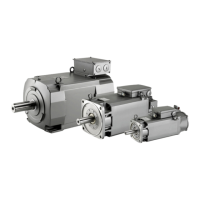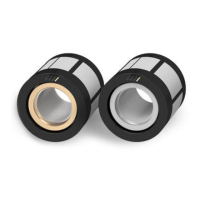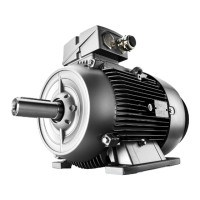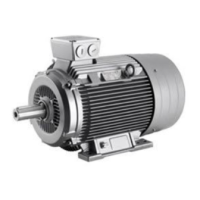WARNING
Danger to life if the holding brake is used incorrectly
If you incorrectly use the holding brake, e.g. you use it as safety brake, this can lead to severe
accidents involving injury and/or material damage.
• Depending on the particular application, strictly observe the appropriate accident
prevention regulations.
Note
Special measures
If you nd references to special measures and/or it is necessary to consult the manufacturer,
already obtain the manufacturer's advice when you congure the system.
5.2.5.2 Mounted holding brake for SH 80 to SH 160
Properties
The holding brakes for motors, shaft heights 80, 100, 132 and 160 are brake modules
(manufactured by Kendrion Binder Magnete) with their own bearings, ange and shaft
extension. The dimensions of the ange and shaft extension of the brake module are identical
with those of the motor. If a motor is to be equipped with a brake, then a motor version with a
ange-type of construction and a smooth shaft (without keyway and key) is used. The shaft of
the brake module can then be shrunk onto the motor shaft (thermal technique). It can be
released using pressurized oil. The brake module is bolted to the motor ange.
Note
Radial and axial forces
The specications for the "standard" bearing version apply for the permissible radial and axial
forces.
See also
Radial and axial force diagrams (Page115)
Method of operation
The brake module is an electromagnetic component with integrated electromagnetically
opening single-disk spring-operated brake for dry running, in which the braking eect is applied
by the spring force and canceled electromagnetically.
If required, the braking eect can also be canceled by an additional mounted manual release.
The brake module is a mounted brake, preferably on the DE end shield of electric motors, as
built-on unit with bearing supported driver pin shaft.
Motor components and options
5.2Options
1PH8 SIMOTICS M main motors
184 Conguration Manual, 12/2022, A5E51895839A

